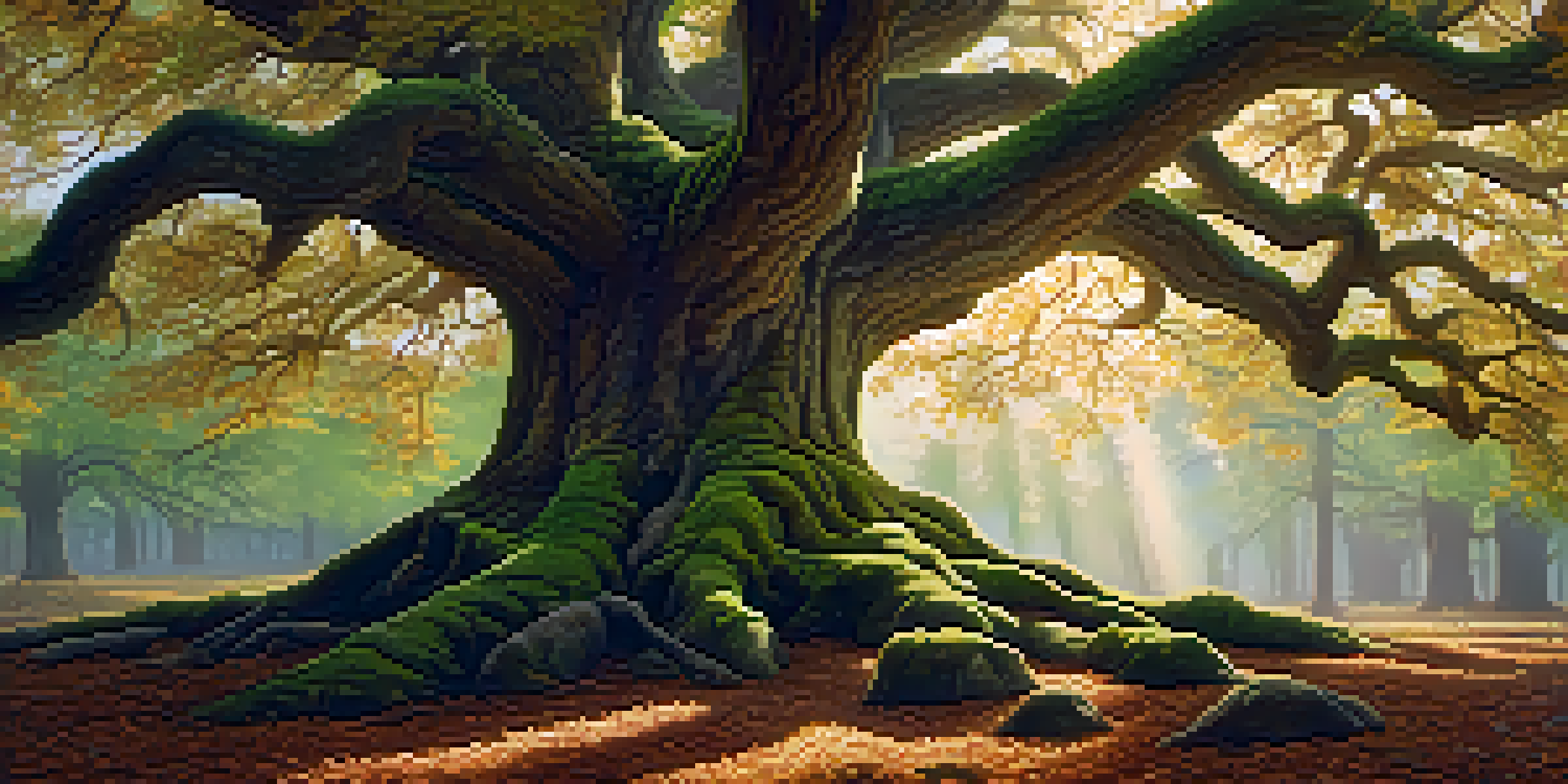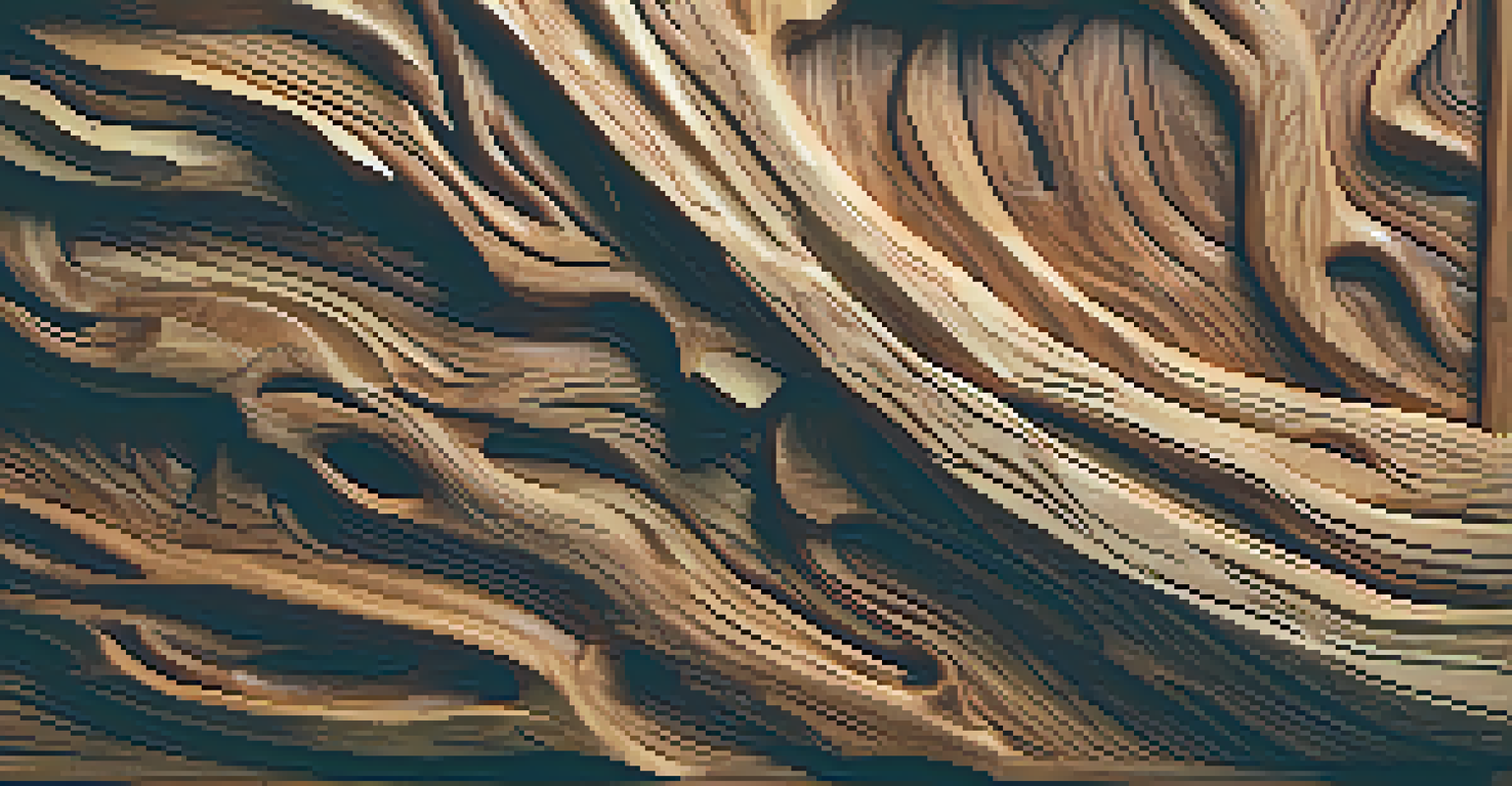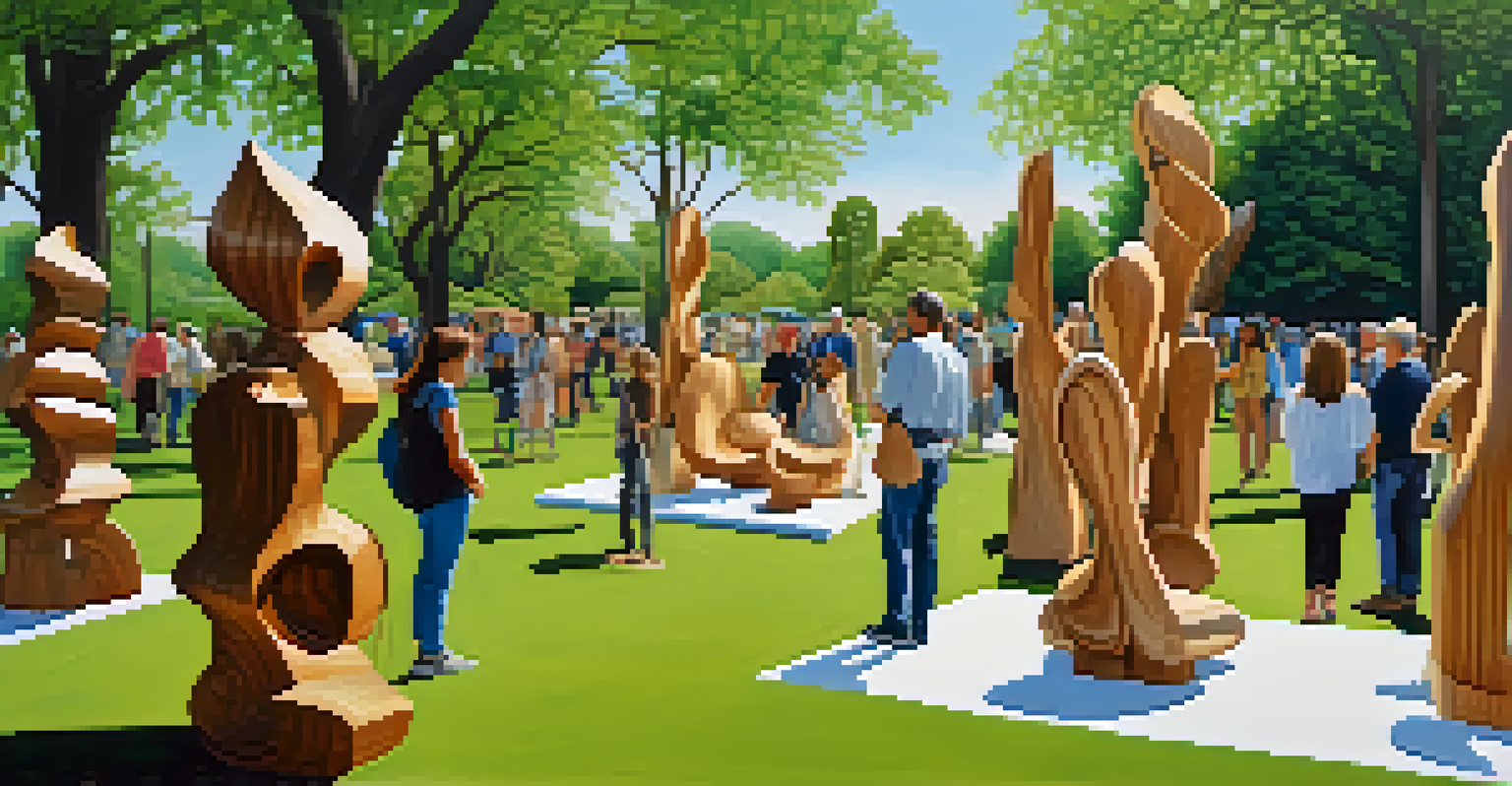From Forest to Sculpture: Carving Inspiration from Trees

The Beauty of Trees as Natural Sculptures
Trees are not just vital to our environment; they are also natural masterpieces. Their unique shapes, textures, and colors can inspire artists to create stunning sculptures. Imagine walking through a forest and noticing the intricate patterns of bark or the graceful curves of branches—these elements can ignite a spark of creativity.
The best artist has no conception that a marble block does not have a soul. Sculpture is a matter of discovering the soul of the wood.
Many sculptors find that the organic forms of trees lend themselves beautifully to artistic expression. For instance, a gnarled oak might inspire a sculpture that captures its ancient spirit. This connection between the artist and the tree not only enhances the artwork but also deepens the appreciation for the natural world.
In this way, trees serve as both canvas and muse, reminding us of the beauty that exists in nature. By observing how light interacts with the leaves or how the wind moves through the branches, artists can translate these moments into their sculptures, creating pieces that resonate with viewers.
The Process of Choosing the Right Wood
Selecting the right type of wood is a crucial step in the carving process. Different woods possess unique characteristics that can influence the final sculpture. For example, hardwoods like oak and maple are known for their durability and fine grain, making them favorites among sculptors who desire longevity in their work.

On the other hand, softer woods like pine and cedar are easier to carve, allowing for more intricate designs to be realized quickly. However, softer woods may not withstand the test of time as well as their hardwood counterparts. Thus, the choice of wood often balances ease of carving with the desired durability of the final piece.
Trees Inspire Artistic Expression
The unique forms and textures of trees serve as both canvas and muse for artists, igniting creativity and deepening appreciation for nature.
Ultimately, the wood selected becomes an integral part of the sculpture, often telling its own story through its texture and color. A sculptor may choose a piece of driftwood for its weathered appearance, which adds character and history to the artwork, drawing viewers in with its unique narrative.
Techniques in Tree Carving
Carving from trees involves a variety of techniques that can dramatically affect the final outcome. Traditional methods, such as hand carving with chisels, allow for precision and a personal touch. This approach often results in unique imperfections that add to the charm of the piece, making it a true one-of-a-kind creation.
Nature is not a place to visit. It is home.
In contrast, modern technology has introduced power tools that can expedite the carving process. These tools can handle tougher woods and create more complex shapes with ease. However, artists must balance this efficiency with the risk of losing the organic feel that comes from hand-carved pieces.
Ultimately, the technique chosen reflects the artist's vision and style. Whether one opts for a meticulous hand-carving method or embraces the speed of power tools, each approach has the potential to yield stunning results that celebrate the beauty of the natural material.
Finding Inspiration in Nature's Patterns
Nature is filled with patterns and forms that can serve as endless inspiration for sculptors. The swirling shapes of tree roots, the intricate lines of leaves, or the smooth curves of tree trunks can provide a wealth of ideas. Artists often take walks in forests or parks to observe these natural designs, allowing them to capture the essence of nature in their work.
Additionally, many artists keep sketchbooks to jot down ideas and impressions encountered during these excursions. These sketches can serve as a foundation for future sculptures, helping to bridge the gap between observation and creation. By translating natural patterns into their art, sculptors can infuse their work with a sense of movement and life.
Choosing Sustainable Wood Matters
Selecting reclaimed or responsibly sourced wood not only enhances the narrative of sculptures but also promotes environmental sustainability.
Moreover, drawing inspiration from nature encourages a deeper connection to the environment. As artists engage with their surroundings, they come to appreciate the beauty and complexity of ecosystems, motivating them to create pieces that not only celebrate nature but also promote its preservation.
The Emotional Connection to Wood Sculptures
Sculptures made from wood often evoke strong emotional responses, both for the artist and the viewer. The tactile nature of wood invites touch, creating a visceral experience that can connect people to the artwork on a deeper level. When someone runs their fingers across the grain of a wooden sculpture, they can feel the story of the tree within it.
For artists, the process of working with wood can be meditative and fulfilling. Each cut and carve becomes a moment of reflection, allowing them to express their emotions and thoughts through their craft. This emotional investment often translates into the final piece, allowing viewers to resonate with the artist's journey.
Furthermore, wood sculptures can carry meanings and memories that transcend their physical form. A piece crafted from a beloved tree can evoke nostalgia or serve as a tribute, creating a lasting connection between the artwork and the beholder.
Sustainable Practices in Tree Carving
As artists embrace the beauty of wood, it's essential to consider sustainability in the carving process. Many sculptors seek out reclaimed wood, giving new life to materials that might otherwise end up in landfills. This practice not only helps reduce waste but also adds character to the sculptures, as each piece carries its own history.
Additionally, responsible sourcing of wood is crucial. Artists often work with suppliers who engage in sustainable forestry practices, ensuring that the trees harvested are done so with environmental stewardship in mind. This commitment to sustainability reflects a growing awareness within the artistic community about the importance of preserving our natural resources for future generations.
Engagement Through Exhibitions
Exhibiting wood sculptures allows artists to connect with audiences, fostering a deeper appreciation for the art and the natural materials involved.
By prioritizing sustainability, wood sculptors can create art that resonates with eco-conscious audiences. These practices not only enhance the story behind each sculpture but also promote a larger conversation about our responsibility to protect the environment.
Exhibiting Wood Sculptures: Connecting with the Audience
Exhibiting wood sculptures offers artists a unique opportunity to connect with their audience. Displaying their work in galleries, outdoor installations, or community events allows viewers to engage with the pieces up close. This interaction can spark conversations that deepen the audience's appreciation for the art and the natural materials used.
Moreover, exhibitions often serve as platforms for artists to share their creative processes and the stories behind their sculptures. Workshops and demonstrations can provide insight into the techniques and inspiration involved in tree carving, inviting audiences to understand the artistry at a deeper level. This engagement transforms passive viewers into active participants in the artistic journey.

Ultimately, showcasing wood sculptures fosters a sense of community and appreciation for nature's beauty. By bringing art into public spaces, artists can inspire others to explore their creativity and develop a greater respect for the environment around them.